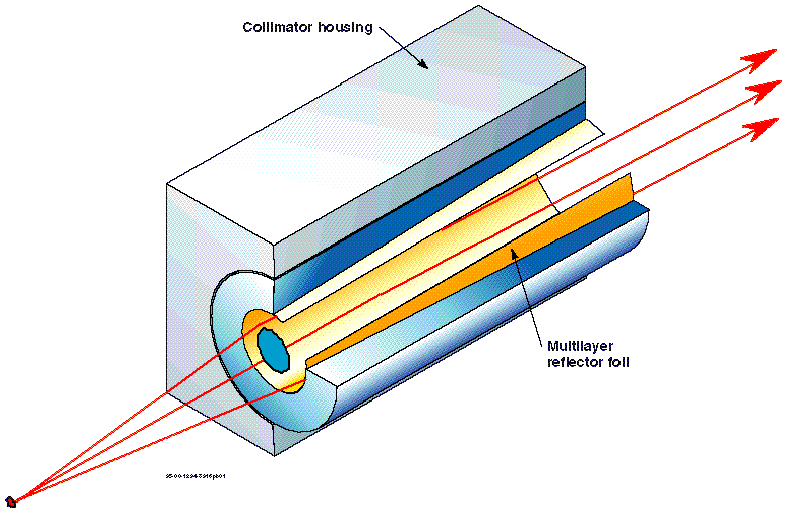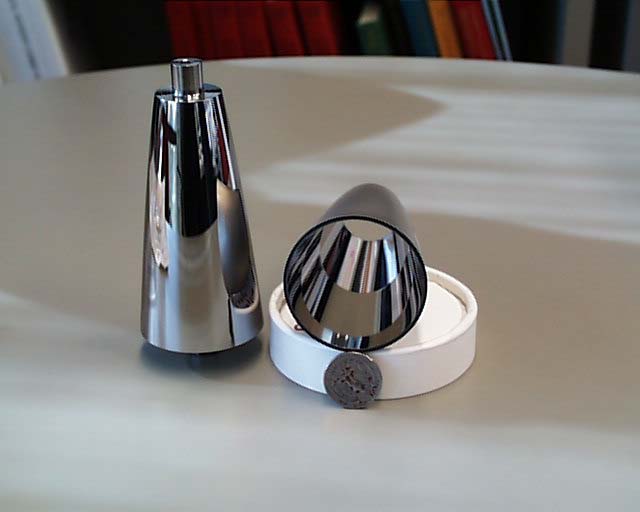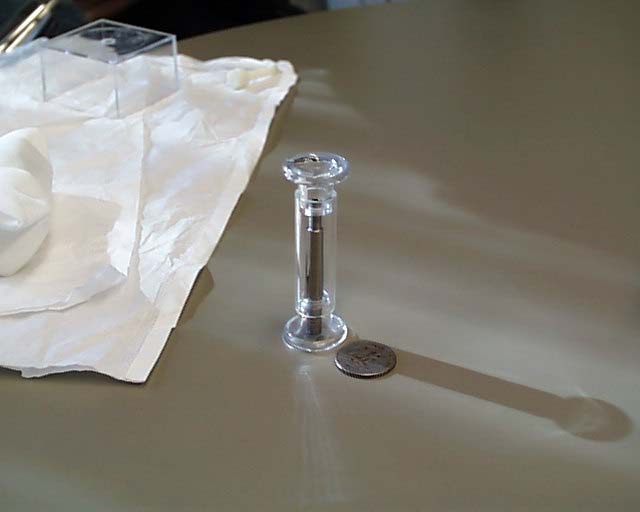Home Page
|
LCLS X-ray Collimating and Focusing OpticsLLNL is developing a new class of x-ray optical devices that have a tubular shape that is open at both ends. The interior surface of the optic is highly reflective to x-rays within a wavelength band of interest. X-rays enter one end, undergo a single reflection at the interior surface, and exit from the other end with a different direction of travel. The shapes of the optics are truncated paraboloidal shells or ellipsoidal shells of revolution. The shape can also be polynomial. Paraboliodal shells including linear cones are often used as collimators and ellipsoidal shells are used as concentrators.These optical structures are made by sputter depositing layers of materials onto a super-smooth mandrel thus forming the optic from the inside outwards. When the mandrel is separated from the sputtered foil, the innermost layer replicates the mandrel smoothness and serves as the reflecting surface. The alloy tungsten-rhenium is a typical material used to make grazing reflection mirrors. Next alternating layers of W3Re and Cu are deposited to give the structure unusually large tensile and hoop strength (much greater than is possible using a single material) and thus the robust ability to retain the original mandrel surface figure. Typical optics that have been fabricated have a length of approximately 10 cm, a large end diameter of 3-4 cm and a small end diameter of 2-3 cm. Usually the small end of the optic will be placed 3-5 cm from an x-ray point source. A beam block can be used to stop the direct unreflected x-rays from exiting the optic as shown in Fig. 1. A photograph of a large-diameter mandrel and its associated replicated optic is shown in Fig. 2. A smaller-diameter mandrel is shown in Fig. 3. When produced with sufficient quality, these optics are expected to play an important role in the LCLS R&D and experimental programs. Applications of interest include concentrating ordinary undulator radiation to power densities comparable to the raw LCLS beam and microfocusing the coherent LCLS radiation to flux densities large enough to undertake experiments on single-molecule imaging.
Figure 1: Artists drawing of an LLNL collimator.
Figure 2: Large-diameter mandrel (left) and replicated optic (right).
Figure 3: Small-diameter mandrel.
|




